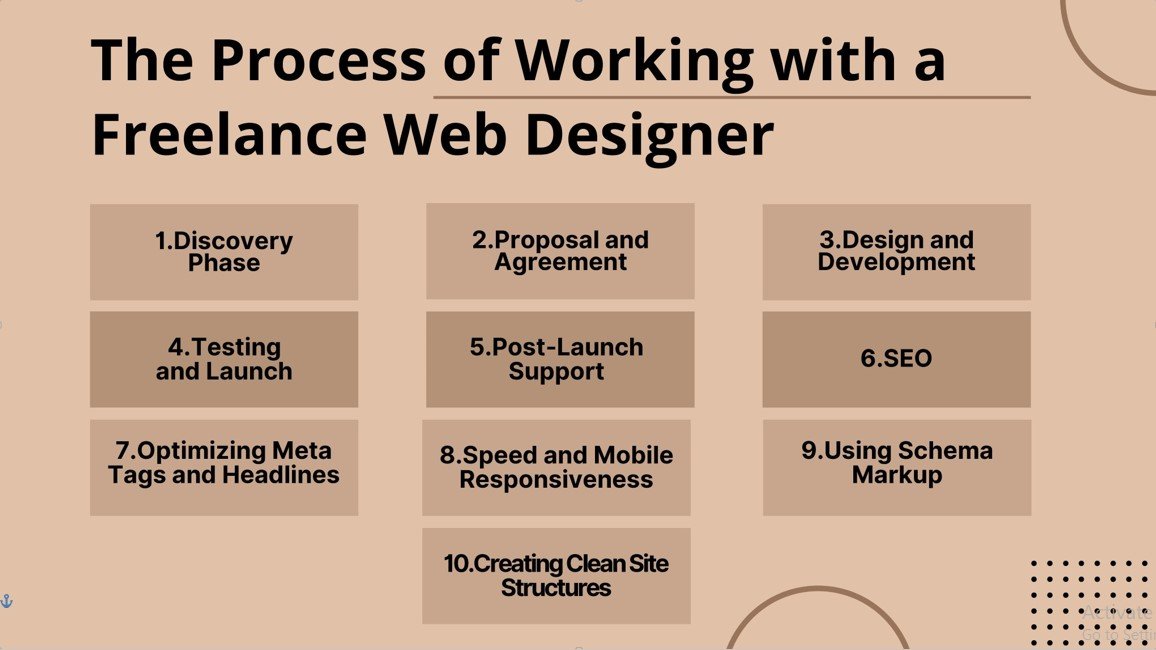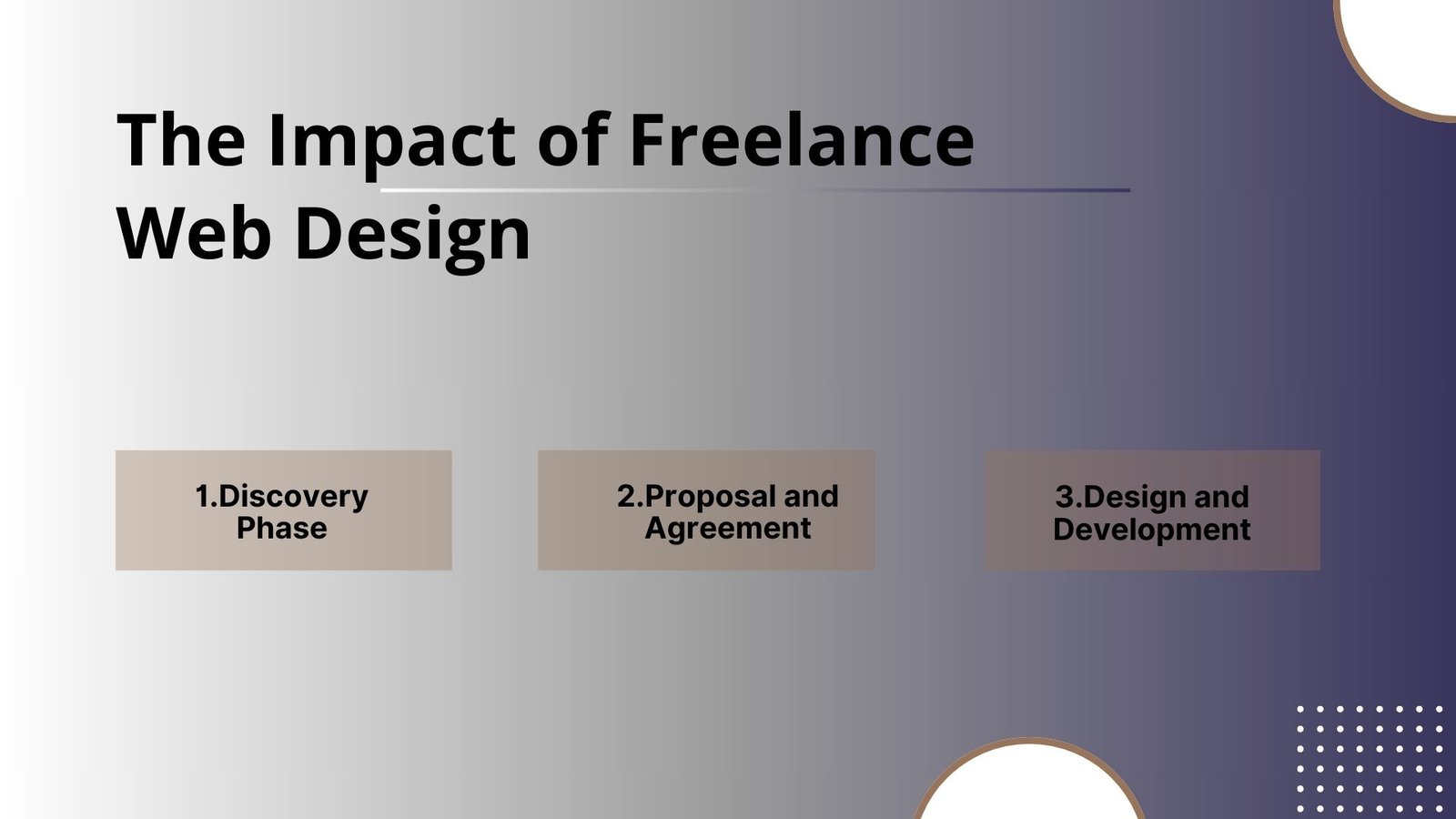A Digital Imperative for Small Businesses
As we enter 2025, the digital landscape continues evolving rapidly, making a robust online presence indispensable for small businesses. Customers today expect to interact with businesses online, whether to explore products, schedule services, or learn more about their offerings. For small business owners, freelance web designers provide an ideal solution to craft a professional, functional, and affordable website that meets modern demands.
The Importance of Websites for Small Businesses in 2025
In 2025, the role of a website goes far beyond serving as an online brochure. It is the cornerstone of a business’s digital strategy, enabling them to:
- Expand their reach beyond local markets.
- Establish credibility in a competitive marketplace.
- Engage with customers through interactive features.
- Drive conversions with clear calls-to-action (CTAs).
- Integrate seamlessly with social media and digital advertising campaigns. A well-crafted website serves as a business’s most valuable asset, acting as the first point of contact for many potential customers.
Why Freelance Web Designers Are the Perfect Choice
Hiring freelance web designers offers distinct advantages for small businesses, including:
Cost-Effectiveness: Freelancers often charge less than large agencies while delivering comparable quality.
Personalized Attention: Freelancers work directly with clients, ensuring a tailored approach to design and functionality.
Flexibility: Freelancers can adapt to tight timelines and unique project requirements.
Expertise Across Tools: Many freelancers are skilled in multiple platforms like WordPress, Shopify, and Squarespace, providing versatile solutions. For small businesses with limited budgets, freelance designers provide a perfect blend of quality and affordability.
Top Features Small Businesses Should Prioritize
A successful website in 2025 must incorporate key elements to stay competitive:
Responsive Design:
In 2025, users access websites on various devices, from smartphones to desktops. Responsive design ensures your website adapts effortlessly to different screen sizes, providing an optimal viewing experience for all users. A responsive website not only improves user satisfaction but also enhances your credibility by demonstrating a modern and user-friendly approach.
Fast Load Times:
In a fast-paced digital world, speed is crucial. Websites that load quickly capture and retain user attention while slow-loading pages often lead to high bounce rates. Fast load times are also a key factor in search engine rankings, making them essential for visibility. Freelance web designers utilize tools and techniques to optimize your website’s speed, ensuring a seamless browsing experience.
Secure and Reliable:
Security is non-negotiable in today’s online landscape. A secure website protects user data, builds trust, and enhances your business’s reputation. Features like SSL certificates and robust hosting solutions ensure that your site remains reliable and safe from cyber threats. Freelance web designers prioritize these elements, ensuring your customers feel confident when engaging with your business online.
SEO Optimization:
Search engine optimization (SEO) is the foundation of digital visibility. By optimizing your website’s content, structure, and speed, freelance designers ensure your site ranks higher in search engine results. This increased visibility attracts organic traffic, connecting you with potential customers searching for your products or services.
E-commerce Integration:
For businesses selling products online, seamless e-commerce integration is a must. Features like intuitive product catalogs, secure payment gateways, and efficient checkout processes are crucial for driving online sales. Freelance web designers specialize in implementing e-commerce solutions tailored to your needs, helping you tap into new markets and boost revenue.
By excelling in these areas, freelance web designers ensure your small business website delivers a flawless and engaging user experience, setting the stage for growth and success.
The Process of Working with a Freelance Web Designer
Collaborating with a freelance web designer typically involves:
Discovery Phase: Understanding the client’s business goals, audience, and preferences.
Proposal and Agreement: Defining the scope, timeline, and budget.
Design and Development: Creating mockups, gathering feedback, and building the site.
Testing and Launch: Ensuring the site is error-free and fully functional before going live.
Post-Launch Support: We offer maintenance and updates as needed. This transparent process ensures smooth collaboration and a successful outcome.
Search Engine Optimization (SEO)
Search engine optimization (SEO) is critical in driving organic traffic to your website. Freelance designers often integrate basic SEO practices, such as:
Optimizing Meta Tags and Headlines: Crafting keyword-rich Meta tags and headlines boosts search engine rankings and attracts user clicks.
Enhancing Site Speed and Mobile Responsiveness: Fast-loading, mobile-friendly websites improve user experience and SEO performance.
Using Schema Markup: Schema markup adds rich snippets to search results, improving visibility and click-through rates.
Creating Clean Site Structures: Organized, crawlable site structures enhance discoverability and streamline navigation.
For advanced SEO, partnering with an SEO specialist can further amplify these efforts.
The Impact of Freelance Web Design
Real-world examples highlight the transformative power of freelance web design:
A Local Florist: With a modern website and online booking, they expanded their clientele by 40% within six months.
An Artisan Bakery: An e-commerce platform allowed them to sell baked goods nationwide, significantly increasing revenue.
A Yoga Studio: With an optimized site and online class schedule, they saw a 25% growth in memberships. These cases demonstrate how freelance web design can unlock new growth opportunities for small businesses.
Overcoming Challenges in Freelance Web Design
While working with a freelance web designer can be highly rewarding, challenges may arise, such as:
Communication Gaps: Clearly outline expectations and maintain regular check-ins.
Budget Constraints: Discuss costs upfront and plan for contingencies.
Post-Launch Issues: Ensure the designer provides training or a support plan. By addressing these potential hurdles proactively, you can ensure a smooth collaboration.
Conclusion: The Future is Digital
As we move through 2025, embracing digital transformation is no longer optional for small businesses—it’s essential to stay competitive. Freelance web design provides an affordable and tailored way to establish a powerful online presence. By partnering with experienced freelance designers, small business owners can create websites that fuel growth, connect with customers, and set their brands up for long-term success in today’s digital-first world. Now is the perfect time to invest in freelance web design—it could be the key to your business thriving in the years ahead.


